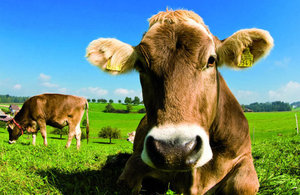CEN updates affecting chemical measurements- September 2019
Standards published by the CEN during April and August 2019, some of which are relevant to chemical measurement in support of food and animal feed regulation

Animal Feed
Regulation (EC) No 1831/2003 describes requirements for authorised additives in feedstuffs for specific animal species or categories, and for specific conditions of use on the EU market where additives generally categorised as:
-
Technological additives (e.g. preservatives, antioxidants, emulsifiers, stabilising agents, acidity regulators, silage additives)
-
Sensory additives (e.g. flavourings, colorants)
-
Nutritional additives (e.g. vitamins, minerals, aminoacids, trace elements)
-
Zootechnical additives (e.g. digestibility enhancers, gut flora stabilizers)
-
Coccidiostats and histomonostats
The list of authorised additives can be found in the European Union Register of Feed Additives.
EN 17294:2019 Animal feeding stuffs - Methods of sampling and analysis - Determination of organic acids by Ion Chromatography with Conductivity Detection (IC-CD)
Organic acids including formic, propionic lactic, citric, fumaric malic, sorbic, benzoic and acetic acids are technological additives used as preservatives in animal feeds subject to conditions specified in Regulation (EC) No. 1831/2003.
EN 17294:2019 describes a method for determining formic, propionic lactic, citric, fumaric malic and acetic acids as well as their salts in feed additives, pre-mixtures, feed materials, compound feed and water.
The principle of the method is extraction of the organic acids from the animal feed into water, followed by a clean-up procedure and determination by ion chromatography (IC) coupled to a conductivity detector (CD) i.e. IC-CD.
The working range for extracted organic acid solutions is between 10 mg/l and 100 mg/l where the lower limit is dependent on the type of feed being analysed and interferences having an effect. This effect is observed for low concentrations of acetic acid in the presence of high concentrations of lactic acid.
The method has a calculated limit of quantification (LOQ) of 200 mg/kg for all seven organic acids and in an inter-laboratory study, it was considered applicable to feeds containing 0.02 % up to 27 % of organic acids.
EN 17298:2019 Animal feeding stuffs - Methods of sampling and analysis - Determination of benzoic and sorbic acid by High Performance Liquid Chromatography (HPLC)
Benzoic and sorbic acid are organic acids used as preservatives in animal feeds subject to conditions specified in Regulation (EC) No. 1831/2003.
EN 17298:2019 describes a method for determining benzoic and sorbic acids as well as their salts in feed additives, pre-mixtures, feed materials, compound feed and water.
The principle of the method is extraction of the organic acids from the animal feed into water, followed by a clean-up procedure and determination by high performance liquid chromatography (HPLC) coupled to a ultra-violet (UV) detector set at a wavelength 230 nm i.e. HPLC-UV.
The working range for extracted benzoic and sorbic acid solutions is between 5 mg/l and 100 mg/l where the lower limit is dependent on the type of feed being analysed and interferences having an effect.
The method has a calculated limit of quantification (LOQ) of 200 mg/kg for benzoic and sorbic acid and in an inter-laboratory study it was reported applicable to feeds containing 0.02 % up to 9 % of organic acids.
EN 17299:2019 Animal feeding stuffs: Methods of sampling and analysis - Screening and determination of authorized coccidiostats at additive and 1 % and 3 % cross-contamination levels, and of non-registered coccidiostats and of one antibiotic at sub-additive levels, in compound feed with High Performance Liquid Chromatography -Tandem Mass Spectrometry detection (LC-MS/MS)
Coccidiostats are compounds used in the treatment and prevention of coccidiosis, a contagious amoebic parasitic disease caused by unicellular organisms affecting livestock, particularly poultry. Only coccidiostats authorised in accordance with Regulation (EC) No. 1831/2003 are permitted for use as animal feed additives.
EN 17288:2019 describes a method for simultaneous screening and/or determining eleven authorised coccidiostats namely halofuginone hydrobromide, robenidine hydrochloride, nicarbazin, diclazuril, decoquinate, monensin sodium, salinomycin sodium, narasin, lasalocid A sodium, semduramicin sodium and maduramicin ammonium alpha in compound feeds and feed materials of plant origin.
The method also enables screening and/or determining five non-registered coccidiostats ethopabate, clopidol, ronidazole, dimetridazole and amprolium as well as screening for the prohibited antibiotic furazolidone at low levels.
The principle of the method is extraction of coccidiostats from the animal feed and determination by high performance liquid chromatography (HPLC) coupled to tandem mass spectrometer (MS/MS) detectors i.e. LC-MS/MS.
The method only fully validated for poultry, cattle and pig compound feeds.
Further information on food and feed legislation is found on the Government Chemist website: